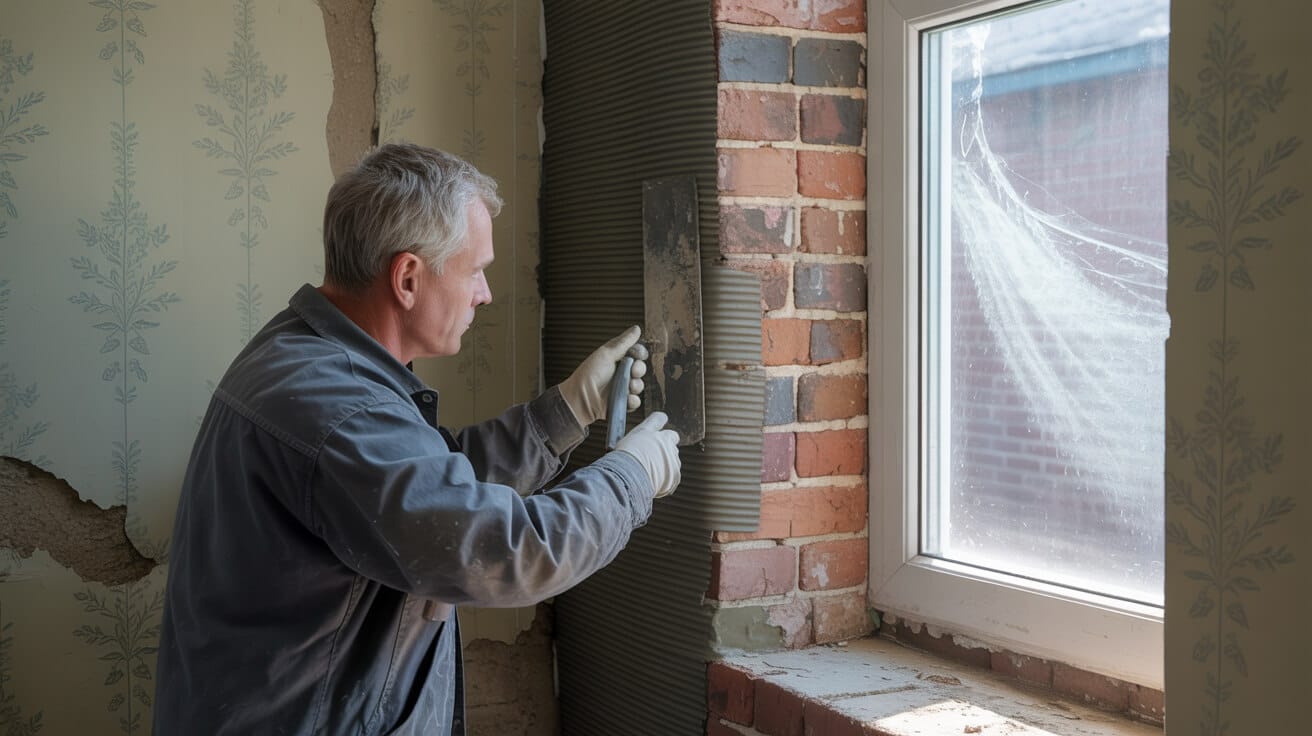 Navigating Conservation Area Restrictions For Exterior Repairs
Navigating Conservation Area Restrictions For Exterior Repairs

Are You Risking Far More Than You Think With Your Next Exterior Repair?
In Brighton, every move you make on your property’s exterior is seen—sometimes by more eyes, always by more rules, than you think. It’s not paranoia. It’s how conservation restrictions actually work. That paint refresh, new window, even a switch between near-identical door handles: each falls under an invisible microscope if your house or block is inside a conservation area. Relying on “it’s only a repair” can set off a painful chain reaction: from warning letters to forced reversals, unexpected legal bills, and months locked in transactional limbo.
Sometimes it’s the smallest change—a replacement trim, a shade wrong paint—that brings the biggest headaches.
You’re not alone if regulations feel needlessly complicated. Estate agents, landlords, and even local contractors trip up here. Brighton and Hove’s conservation zone boundaries sprawl quietly across hundreds of streets, and properties inside are held to a higher bar. Enforcement teams leverage historic guidance and digital audits, and “I wasn’t told” won’t protect you if officials find unpermitted work. Think neighbours get away with it? Authorities now monitor changes systematically, flagging anything unregistered—down to hardware and paint details.
The cost of guessing or following precedent can be steep. One “routine repair” in a conservation area may turn into months of friction with council teams; permissions retroactively demanded, insurance headaches, and compliance risks that chase you at mortgage, sale, or letting.
Safe ground starts with precision. Use the council’s directory, double-check conservation maps, and always request the area’s current Character Statement. If in doubt—even with “like-for-like” repairs—log a query by email before lifting a tool. Paper trails matter more than intent. It’s a simple discipline that saves time, money, and a reputation as a responsible owner or manager.
Why Conservation Rules Aren’t Just Red Tape for Owners in Brighton

To some, “conservation area” signals a layer of bureaucracy one notch above parking fines. In reality, skipping these rules can cost you far more. Properties within Brighton’s conservation zones are part of a legal framework protecting street character, heritage value, and market reputation. Fines for violations are just the tip—council reversal orders, red-flag Land Registry notes, and compliance holds can freeze a property’s liquidity faster than most realise.
Watching a renovation grind to a halt over a missing council email? That’s when hindsight really hurts.
This system doesn’t only affect big developers. Routine repairs—swapping out a door, painting a sill, repointing brickwork—may each require permission, with Article 4 Directions squashing “permitted development” rights that apply everywhere else. Non-compliant works don’t simply trigger a slap on the wrist. They get flagged through spot checks, neighbour complaints, or even automated audits comparing historic street imagery to new changes.
Legally, you’re on the hook for compliance, not the contractor. If inspectors find irregularities, the enforcement process is merciless. Out-of-spec windows, unsanctioned repairs, or even paint shade deviations breed a trail of paperwork: first, an investigation; then, potential fines or enforcement notices; and, in worse cases, forced reversal—with costs and stress multiplied if property deals or lettings are already in motion.
The most reliable shield is proactive compliance. Download your Character Statement. Review Article 4 overlays in your neighbourhood. Only move forward with repairs when you have documentary confirmation that the council’s expectations are being met, not just a contractor’s nod or a neighbour’s example.
Which Repairs Are Truly “Safe”—And Where Does Risk Begin for Brighton Owners?

Here’s the uncomfortable truth: what’s permitted outside a conservation area can be tightly forbidden inside, and “like-for-like” is stricter than most owners assume. The pitfalls often start with appearance or material swaps—timber to uPVC, subtle glass pattern changes, fast-cure paint instead of a heritage finish.
In Brighton’s conservation context, repairs are only risk-free if they are invisible to the council’s eye—meaning no visible alteration in style, material, profile, or colour, and a perfect match to the area’s preserved features. Article 4 Directions often erase default “permitted development” rights, so even small upgrades may now need explicit written consent.
Change a shade, swap a style—or instal a fixture without explicit sign-off—and enforcement can follow, no matter how minor the job feels.
Where risk begins:
- Swapping classic sash windows for modern casements, even “in the same size”
- Repainting a door a fresh colour—even one that “matches the neighbourhood”
- Changing ironmongery style, external lighting, or boundary definition
- Completing a repair with any material or finish not specified in your Character Statement
The only safe way? For every job—routine or ambitious—check Article 4 restrictions for your address. Email council conservation teams for a written green light if you’re considering any visible change. Log their response, save your correspondence, and only proceed once everything is in black and white.
The Article 4 Trap: Why Owners Respectful of Conservation Still End Up in Trouble

Few regulations trip up even cautious, compliance-minded owners more than Article 4 Directions. In Brighton, these overlays quietly strip away many default rights—even from the most diligent property managers—and convert ordinary exterior jobs into permission-controlled activities. That means repainting, repairing, or updating “just as before” could be unauthorised if you proceed without council approval.
When Article 4 is in play, works requiring permission commonly include:
- Any change in the colour or paint finish of external surfaces
- Window or door replacement, even like-for-like in non-listed properties
- Roof repairs involving new tiles, changes to material or visible surface
- Adding fixtures: satellite dishes, security cameras, street-facing lighting
- Amending walls, boundaries, or gates, no matter how visually “neutral”
The first sign Article 4 applies is often a council warning, not a friendly letter—usually triggered by routine audits or local reports.
The specifics of Article 4 vary house by house, even street by street. That’s why confirming your property’s current status before commissioning work is essential. One overlooked Article 4 direction can stall or even unwind sales, trigger reversals, and sour letting deals.
Council and compliance technicians can run targeted searches, flag precise risk, and even help map out orderly permission steps. When in doubt—even for jobs you’ve handled before—the cost of a five-minute council query is far less than any reactive fix.
Does a Listing Double Your Risk? What Owners Must Know About Listed and Conservation Properties

Landing in both a conservation area and the listed building register is like the compliance “double bind.” Now, every visible repair—even a directly matching paint refresh or joinery fix—almost certainly requires formal consent, not merely notification. And the penalty streamlines for slip-ups are sharper: land registration red-flags, blocked sales, and potential criminal penalties for unauthorised works.
It’s not just delayed—it’s the legal standing of your asset that’s on the line with every unapproved fix.
Being listed means your property is subject to historic value preservation—down to materials, methods, and even hardware style. Permission must arrive, in writing, before a screwdriver comes near the site. Contractors’ opinions, neighbour precedent, or “everyone does it this way” will not help in a dispute or insurance claim scenario.
For property managers and landlords, documentation carries even more weight: housing licence applications, mortgage approvals, and insurance renewals all now commonly require evidence of explicit consent for past works.
Best practice? Proactively start every repair or alteration with an email to the local conservation team. Demand sign-off before booking contractors or acquiring materials. File every approval, photo, and invoice for your compliance portfolio—think of it as your asset’s insurance policy against regulatory friction.
When Urgency Clashes With Conservation: Trees, Emergencies, and Handling Repairs Fast

Brighton’s conservation rules protect more than bricks and paint—they often cover trees, stonework, and site features invisible to casual observers. Regularly, contractors and owners get penalised for urgent works they think are outside the scope: felling a tree impeding drains, heavy pruning near an outbuilding, or addressing sudden storm damage.
For any tree covered by conservation rules, six weeks’ written notice is standard for felling or major cutting. Skip this and penalties—usually heavy—bear down swiftly. But when a crisis hits—floods, broken glass, gas leaks, elderly occupant safety—your priority is immediate stabilisation. “Make safe” work is always protected, as long as it is promptly and proportionately reported.
Document as you go: photos, receipts, timestamps—then notify the council quickly and keep all proof for your records.
How to do it right:
- Before any urgent fix, snap pre-work photos—ideally with a date stamp.
- After the work, submit a written summary (with photos) to the council.
- Store all communication, receipts, and job specs in a central, backed-up location.
- Let your agent, lawyer, or insurer know promptly if documentation will be used in future compliance signoffs.
Choose experienced technicians for urgent and planned works—they’ll know what notification or paperwork is needed and can issue you a compliance log post-visit. It’s the step that turns “risky emergency fix” into “auditable, above-board job” when authorities call.
Step-by-Step: The Bulletproof Compliance Path for Brighton Repairs

Most property issues—cracks, leaks, ageing parts—won’t wait politely for a compliance cycle. Instead of gambling, bake compliance into your routine and documentation from the beginning. The approach pays dividends: fewer council headaches, no transactional slowdowns, and a reputation for professionalism among agents, buyers, and tenants.
Lock in these steps for any non-urgent repair:
- Subscribe to local council notifications: Article 4 overlays can change rapidly and are sometimes updated in silence.
- Before each project, consult current resources: The [Brighton Conservation Directory](https://www.brighton-hove.gov.uk/planning/heritage/conservation-areas-street-directory?utm_source=openai), Planning Portal, and Street Map provide reliable, authoritative data.
- Run every plan by the council, never a contractor or the “neighbour effect”: Only written feedback, from the council, matters.
- Store a central compliance file: Email chains, approvals, invoices, method statements, and before-and-after photos should sit in a single, accessible place—think Dropbox, not your desktop.
- Vett every contractor: Only assign jobs to those who can show successful conservation-area records, logged repairs, and familiarity with local sign-off routines.
Over time, this discipline becomes a protective habit. Transaction-side professionals spot it; so do council teams. You become the owner whose properties glide through sales and lettings—even when neighbours get caught off guard by sudden paperwork checks.
The High Cost of Overlooking Council Processes: Turning Small Errors Into Major Disruption

The catch to conservation rules isn’t always obvious at first—until a letter, months later, threatens a completed repair with reversal, a stalled sale, or costly months-long council friction. Brighton’s enforcement teams are sophisticated. Street audits, tips from concerned residents, and monitoring of Google Street View for unsanctioned changes are all part of the modern toolkit.
The silent paperwork error: it hides well—right up to a mortgage, letting, or sale—then strikes when you need things to move fast.
Most frequent fail-points:
- “If my neighbour did it, it must be fine here”—ignoring each property’s unique status
- Taking contractor advice without council confirmation on file
- Not clocking Article 4 changes before commissioning works
- Missing the window to document urgent repairs just after they happen
- Losing the paper trail—approval emails buried, invoices misplaced, or no photo records
Fumbling one of these adds weeks to transactions, attracts reversal orders, or leads to insurance hiccups when you need cover most. The best managers are obsessively systematic—nothing starts without a check, and every fix leaves a digital compliance breadcrumb trail.
Get Specialist Support: Why Owners Swear By All Services 4U and Hector Gauge
When confusion sets in or repair urgency spikes, experience offers stability and speed. Enter All Services 4U—where technicians are not only repair specialists, but process guides. Hector Gauge commands Brighton’s tricky compliance terrain, clocking 1,300+ repairs completed to council standard—without a single forced reversal.
What sets this team apart:
- Rapid-response compliance mapping: Send photos or project intentions, and receive a custom timeline, risk map, and checklist before booking trades.
- Flawless record-keeping: Every fix is photographed, annotated, time-stamped, and digitally logged—so you’re protected against council queries, Land Registry red-flags, or post-event agent requests.
- End-to-end guidance: Hector’s calm expertise walks you from “should I get permission?” through council signoff, repair coordination, and emergency documentation—all with minimal fuss or translation needed.
The top regret? I should have checked before starting. Instead, I’m now stuck reversing jobs and explaining myself for months to follow.
Choosing All Services 4U means work is done once, done legal, and done to the highest compliance standard—freeing your mind from paperwork anxiety and ensuring your asset’s value is protected. Case studies, compliance logs, HMO licencing records, and decades in Brighton make this the trusted partner when reputation, sale speed, or insurance value matter most.
If you want every repair to be a stress-free compliance win, schedule your compliance review with Hector Gauge today—Brighton’s most trusted name in property maintenance.
Frequently Asked Questions
How can you guarantee the planning status of your Brighton property without risking compliance mistakes later?
You can avoid costly compliance errors by independently confirming your property’s planning status before any exterior work—don’t rely on word-of-mouth, previous owners, or a tradesperson’s assurances. Brighton & Hove City Council publishes an official (https://www.brighton-hove.gov.uk/planning/heritage/conservation-areas-street-directory?utm_source=openai) and detailed boundary maps, updated annually to reflect changes in local and national planning law. Even properties with ambiguous boundaries or in converted buildings can have their status verified via an emailed request to the council planning team, which usually replies within a working week.
“A five-minute official check doesn’t just steer you clear of penalty—it saves time and protects resale value for years.”
Savvy property owners keep a digital copy of any council response, adding it to their home documents for future proof. For those already juggling planned works or facing pressure to proceed quickly, experienced firms such as All Services 4U proactively complete this check during their scoping phase, providing clients with address-specific compliance evidence. By following these steps, you’re arming yourself against surprise enforcement or delays when remortgaging, selling, or letting.
Fast protocol to check Brighton conservation status:
- Search your street and postcode in the council’s live directory.
- For properties near zone edges or in split-use buildings, request written status from the council.
- Save council replies, consent notices, and planning emails in your digital property file—these serve as valuable proof in any dispute or transaction.
- For any project requiring visible change, seek advice from a conservation-accredited tradesperson familiar with Brighton’s rules.
Proactive property management isn’t just about avoiding penalties—it’s about being effortlessly prepared for tomorrow’s legal and financial steps.
Which external changes most often trigger planning breaches in Brighton’s conservation areas, and how do you stay ahead of them?
External planning breaches peak when owners make aesthetic or structural changes that subtly—but materially—differ from the original design or approved building materials. Local Article 4 Directions mean that not only big renovations, but even repainting, swapping traditional sashes for new casements, or upgrading to energy-efficient doors can trigger violation—even when the upgrade seems minor.
Council enforcement trends reveal more than 40% of cases start with what are considered ‘routine’ upgrades: upgraded double-glazing, artificial stone facing, bold new paint colours, or modern security fixtures. These changes often happen because owners follow a neighbour’s lead, not knowing that permitted development rights can vary house-by-house and year-by-year. What worked for a friend might be an instant breach today.
“Assumptions—the idea that copying a neighbour or past owner is safe—are the silent driver of most planning headaches in conservation zones.”
Common high-risk external works:
- Changes from timber to uPVC for doors and windows
- New/revised paint colours or external decorative features
- Redesigning gates, fences, or adding garden outbuildings
- Modifications to roofline (shape, chimneys, tiles)
- Enclosing or reworking front gardens for drives or bins
Before any visible improvement, consult the latest council Article 4 status sheets and talk to specialists like All Services 4U, who track street-level requirements as part of every quote process. Prioritise long-term asset value by getting written sign-off and keeping a photo record of works.
How have Article 4 Directions and listed status transformed compliance risk and property transactions for Brighton owners?
Article 4 Directions, active in many of Brighton’s most desirable neighbourhoods, elevate risk by stripping back most blanket permitted development rights. As a result, even identical replacements must be approved in writing—no more “like-for-like equals safe” logic. Listed building status increases scrutiny, making consent necessary for nearly any visible work, with maximum penalties exceeding £20,000 for unauthorised actions.
Recent data from lending and legal sources shows a sharp rise in mortgage declines, property value drops, and delayed sales linked directly to unresolved conservation and listing paperwork—especially where older ‘minor’ modifications were left undocumented. A missed consent, years old, can cost a resale or force the owner to pay for expensive remedial work under threat of legal action.
“It only takes one forgotten window replacement or paint job, long before you owned the property, to lock up a sale for months.”
Article 4 / Listed building risk-reduction steps:
- Download up-to-date Article 4 and listing status from the council and (https://historicengland.org.uk/listing/the-list/).
- Seek all planning and consent answers in writing—verbal advice does not protect you.
- Ask your contractor for a compliance pack including council correspondence—All Services 4U compiles one for every project.
Preemptive diligence not only shields your investment from future headaches, it also protects your negotiating position with buyers, lenders, and insurers.
What common documentation mistakes lead to council enforcement or dropped sales in Brighton’s conservation areas?
Documentation lapses are the single biggest driver of enforcement actions and failed property sales. Owners often skip retaining photo logs or formal written evidence, especially for “quick” repainting, minor fence repairs, or garden landscaping. Council enforcement often starts years after the fact, prompted by buyer’s solicitors or lenders during sales or refinancing. Even well-intentioned jobs, if unlogged or based only on a handshake agreement with a contractor, can end up as compliance disasters.
“The costliest fixes start with missing paperwork, not with shoddy workmanship—every professional owner now keeps digital records from quote through completion.”
Documentation essentials for compliance continuity:
- Photograph the property before, during, and after any visible exterior work; save images with visible dates.
- Keep all written permissions, council emails, and original specialist quotes together in your property file.
- For urgent/emergency repairs, keep clear documentation of damage and repairs—they’re required for any insurance or council query later.
- Request a digital compliance pack from your repair specialists; All Services 4U delivers this as standard, including every relevant email, permit, and invoice.
Every new owner, lender, or letting agent is now demanding proof—make it part of your routine, not a scramble at the last minute.
What rules apply to emergency repairs in Brighton conservation areas, and how should you evidence action to stay covered?
Legislation in Brighton enables owners to undertake urgent repairs for immediate safety—leaking roofs, structural damage, forced entry, or electrics. However, these rights come with the responsibility to document every action. That means taking clear photos before and after, logging steps taken, and promptly notifying the council of what was done—especially if protected trees or listed structures are involved.
Owners who skip documentation or delay reporting emergency repairs can find insurance claims blocked or face retrospective enforcement, especially during property transfer or insurance renewal. Council guidance recommends emailing the planning team within 48 hours and storing all evidence securely for future reference.
“Being prepared isn’t just a matter of paperwork—it’s your guarantee that a fast fix today won’t turn into tomorrow’s compliance problem.”
Key moves for clean emergency compliance:
- Snap photos at every stage: hazard, progress, finished outcome; use timestamps when possible.
- Send a summary email (with photos attached) to Brighton’s planning/heritage inbox, explaining the urgency, actions taken, and planned follow-up.
- Archive all job sheets, insurer approvals, and emails in a property-reserved folder—both locally and on a secure cloud.
- Only use contractors who actively compile evidence packs in real time—All Services 4U automates this for every urgent repair.
Thoughtful evidence is your only shield against later challenge, enabling fast property transactions and smooth insurance claims.
How do you recognise a top-tier Brighton conservation repair specialist, and what do they do differently to secure your property’s future value?
A genuine Brighton conservation area expert approaches each job with a combination of council rapport, regulatory knowledge, deep technical skill, and transparent, referenceable results. While many can repair a window or repaint a façade, few maintain digital compliance logs, send pre-work council queries, and document every phase to protect both the owner and the property.
Case studies from successful urban landlords and letting agents show that selecting a compliance-focused specialist—one with trackable references, local authority endorsements, and a proven digital documentation trail—directly increases property resale and remortgage success. All Services 4U, led locally by Hector Gauge, provides WhatsApp-based photo updates, digital planning packs, and written council dialogue for every job.
“Quiet diligence on compliance builds your asset’s future value and spares you needless drama.”
Distinctive traits of Brighton conservation leaders:
- Prepares council documentation and digital records pre-project
- Offers visual proof and real-time updates at every stage
- Issues a digital compliance portfolio for property files, insurance, and future sales
- Holds verifiable references from major local landlords and authorities
Invest in your property’s legacy and avoid regulatory stress—choose a firm whose diligence extends beyond the job itself to every aspect of compliance, documentation, and local authority rapport.



